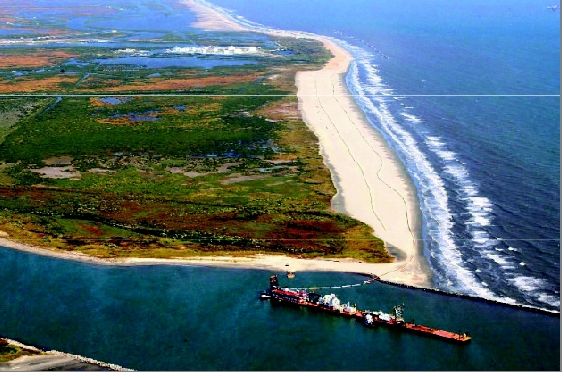Bayou Community Foundation offering grant to non-profits
February 19, 2015First of 2 free flood risk discussion dinners tonight
February 24, 2015As the Coastal Protection and Restoration Authority changes its leadership, both the old and new chairmen expressed excitement in continuing the fight to save Louisiana’s wetlands at last Tuesday’s South Central Industrial Association monthly luncheon.
Former CPRA chairman Jerome “Zee” Zeringue, who resigned in late January, and the man who Gov. Bobby Jindal appointed to replace him, Chip Kline, discussed the coastal restoration projects that lie ahead and the issues that stand before them.
Discussing programs from the CPRA’s 2012 Master Plan – a comprehensive look, encompassing science and technology at advancing concepts and projects, matched with a 2007 Master Plan, which was more conceptual and laid the groundwork for what was ahead, both have resulted in more than 159 miles of levees being constructed or approved and close to 20,000 acres of wetlands being built or repaired since 2008 in Louisiana.
“Building wetlands is not rocket science. We’ve been building wetlands for decades. The key to the goal is to build wetlands that are sustainable for generations to come, and
we have been successful,” said Zeringue, who served as chairman for roughly a year.
Zeringue, however, warned local business and political leaders of President Barack Obama’s recently released 2016 budget which planned to do away with the Gulf of Mexico Security Act (GOMESA), a law which requires the federal government to dole out 37.5 percent of the money it collects from offshore oil and gas rigs in the Gulf of Mexico to Louisiana, Mississippi, Alabama and Texas.
“We do believe and feel that if we can get the funding, and the president doesn’t screw it up, the additional funding that we have from GOMESA, and other efforts, that we can achieve the land building goal and achieve a sustainable ecosystem for generations to come,” Zeringue said.
With the program set to fully kick in two years from now and provide Louisiana with between $400 and $700 per year, Kline said it is a revenue stream CPRA has been anticipating for a long time.
“This is a revenue stream that we have planned our efforts around, and I can tell you that we’re going to work very closely with our congressional delegation to make sure that this doesn’t happen. I’m pretty sure that there’s a former chairman (of the Coastal Protection and Restoration Authority),” Kline said, referring to recently elected U.S. Rep. Garret Graves, “that’s chomping at the bit to have this discussion up in Washington, but it’s something that we’re keeping a very close eye on.”
As for the past seven years, CPRA has implemented more than 2.1 billion in restoration projects and 11.2 billion in hurricane protection projects since 2008, including 1.7 billion in Terrebonne, Lafourche and St. Mary parishes. Of that $1.7 billion, 41 percent is in projects that are currently in engineering and design, 18 percent is in the Operations, Maintenance and Management stage, 17 percent is in construction, 10 percent is headed to bid and 1 percent is in the planning stage.
Currently under construction in the Bayou Region is the $217 million Caminada increment 1 and 2 projects, a $137 million Morganza to the Gulf project and a $2.7 million Franklin floodgate, barge and pump station project.
“We remain 100 percent committed to the Morganza to the Gulf project. We’re going to get this project built,” Kline said.
Currently heading to bid is a $26 million Barataria Basin Landbridge project, a $20 million Mississippi River Reintroduction into Bayou Lafourche project, a $35 million Lost Lake Marsh Creation project and a $111 million North Caillou Lake Headlands project.
A 2-phase, combined $217 million Caminada headlands project is among many projects in the Coastal Protection and Restoration Authority’s Master Plan.







